We are talking about the principle of work of the drainage system, design features, varieties and technology of styling drains.
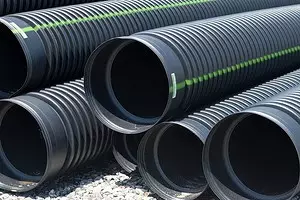
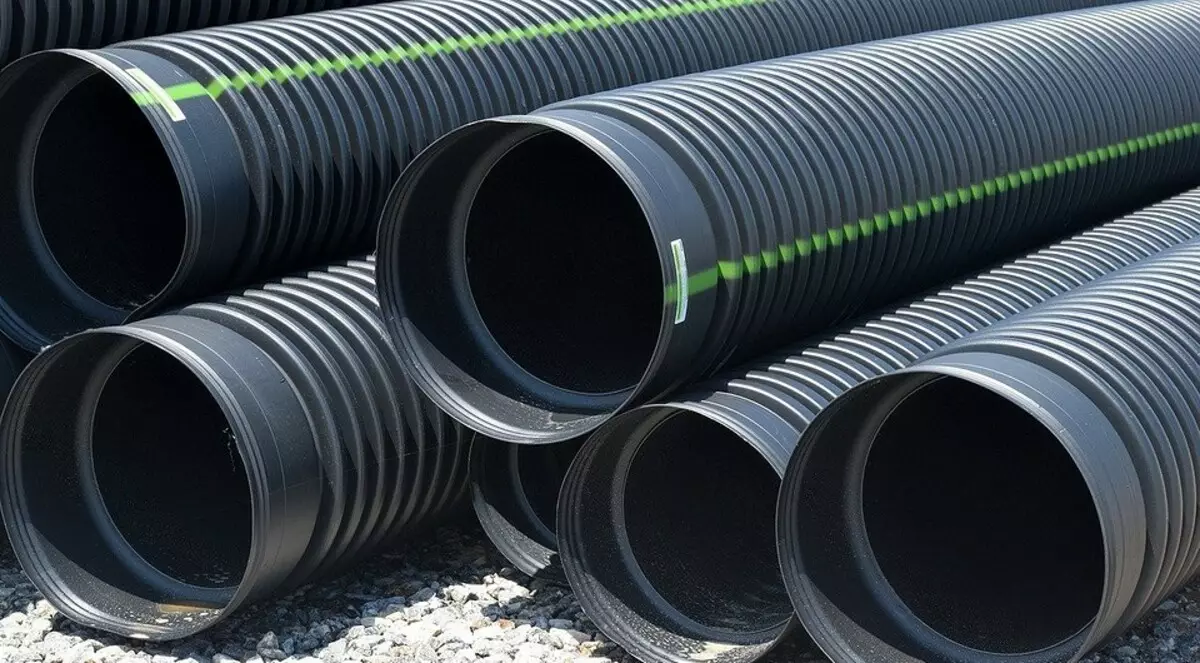
High humidity on the plot is always bad. Excess moisture destroy the buildings, interfere with the normal growth of plantations. To get rid of excess water, use a system of drainage pipes. We will deal with what pipes are, how they work and how to put them.
All about drains and their installation
How it worksConstructive differences of drainage elements
Materials for pipe-drain
FEATURES OF MONTAGE
How the drainage pipe works
Drainage is a system of pipes, reducing excess water from the territory. It can be superficial or deep. In the first case, the grooves connected to the overall network, which are collected and disassembled moisture. In order for their edges, trains-drain are stacked inside. Depth drainage is assembled from pipes. They are stacked at a certain depth, connect to the network and bury.
Drain pipes work on different principles. Perforated models are equipped with fine holes, through which drops of fluid fall inside. They accumulate and gather in small streams. For their discharge, drain are used without perforation. They transport the drains to the drive well or to the discharge place in the storm sewer. Depending on the purpose, the diameter of parts differs. For the drainage of individual sites, products are usually enough for 200 mm, whereas in civil engineering elements of 400 mm and more are used.
The drainage system is placed under the tilt. It is necessary that the drains of Self go to the place where they will accumulate or discharge. The accumulation places are placed at the lowest points of the drainage network. For example, they put accumulative wells. Of these, you can take water for watering and other business needs. Sometimes the system is connected to a centralized sewer lavety.
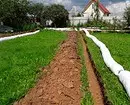
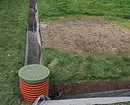
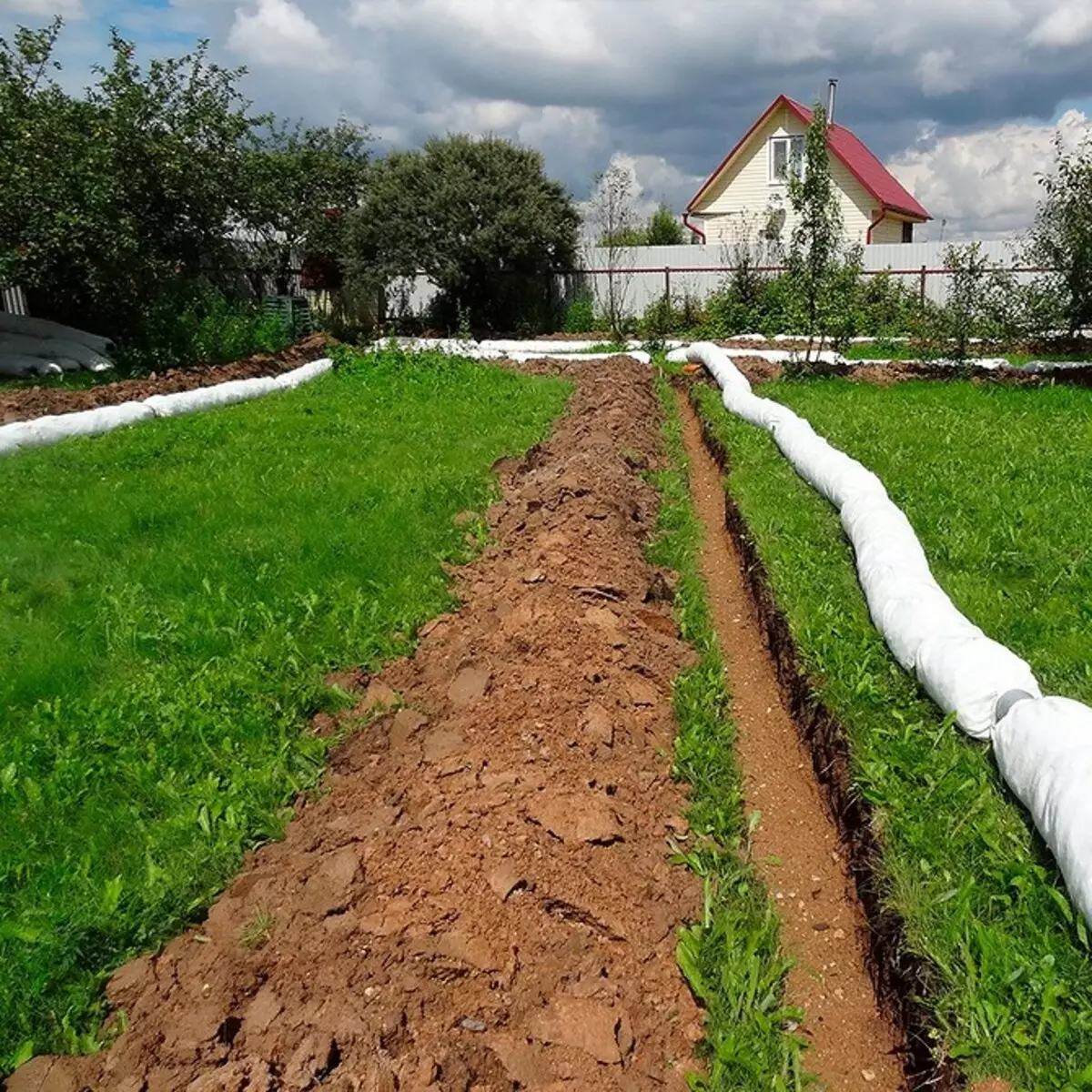
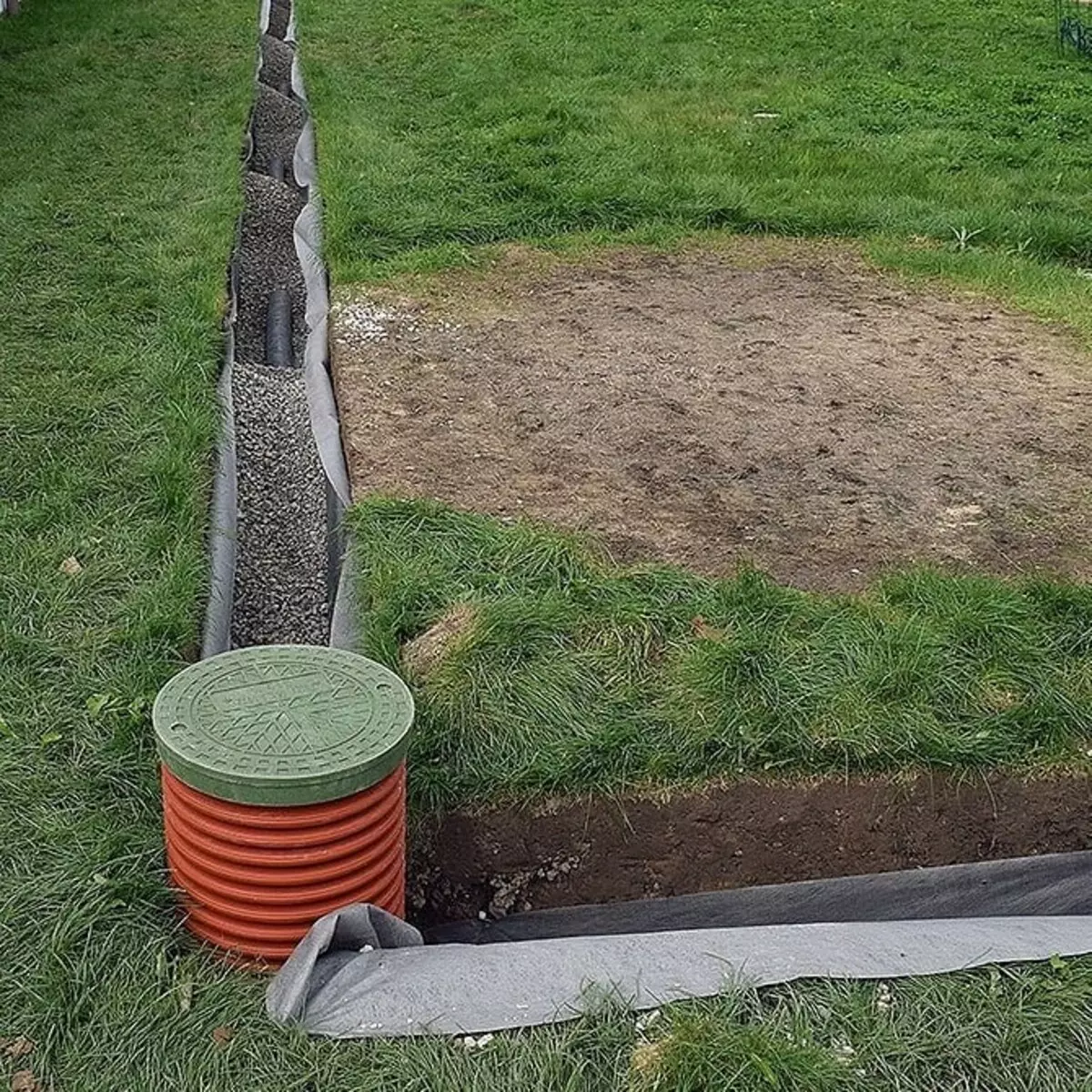
Design features DRET.
The main constructive difference of drainage pipes for the removal of groundwater is considered to be the presence or absence of perforation and its type. There are partly and fully perforated drain pipes. In the first case, the holes are not located on the entire surface of the product. In the second they are located across the detail. This difference is explained by the area of application of perforated elements. We will analyze what are the drainage pipes according to the type of perforation.Pickle types
- 120 °. Holes are located in the upper third of the product. Used on sites with small humidity.
- 180 °. Perforates half the details. It is applied in areas where the amount of rain and melt waters prevails over ground.
- 240 °. The lower third of the drain remains the whole, the upper third is perforated. Used to remove water on the slopes and on sites with different types of soil.
- 360 °. Full perforation. It is used in territories with strong flooding.
Depending on the depth of laying, single and two-layer pipes are used. Single-layer products are designed for the depths of up to 3 m. It is a model of the strength class SN2 and SN4. The first is laid no deeper than 2 m, the second - to the depth of no more than 3 m. Two-layer drains are more durable, the class of rigidity is SN6. The outer layer is manufactured corrugated to better resist the loads. Inside - smooth, it makes it easier to move the fluid.
Drain pipes are made in a tough and flexible version. Rigid parts are divided into segments of no more than 4 m and fit with special adapters. They are needed to perform turns, bends, etc. Flexible elements have a SN8 hardness class, easily bend in the right direction. Stay at a depth of 10 m.
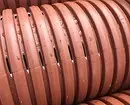
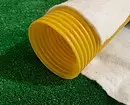
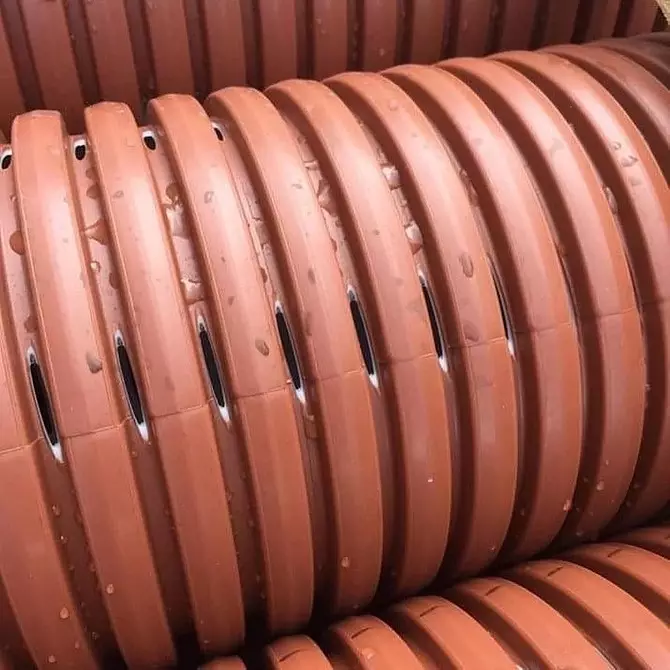
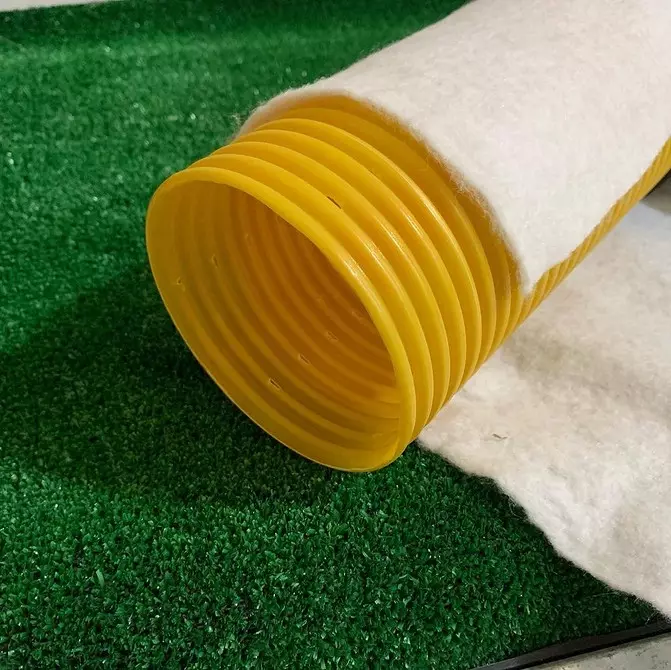
Materials for the manufacture of pipes-dren
Initially, ceramics and asbestos were used for the manufacture of elements for drainage systems. The products were obtained rather durable and reliable, but fragile and heavy. In addition, asbestos is toxic, using it on a plot at a residential building is undesirable. With the advent of polymers, ceramic and asbestos-cement drains have almost ceased to be used. Exception - Drain pipes from environmentally friendly white asbestos. Their meaningful advantage - the presence of pores through which moisture is absorbed.
Plastic is cheaper, easier, it is easier to mount it. The life of plastic products is at least 50-60 years, they are insensitive to temperature differences and aggressive chemical impurities. There are several varieties of polymeric products. Briefly characterize the main types of drainage pipes from plastic.
- PND pipes. Move from low pressure polyethylene. Characterized by increased strength and flexibility. Serve 50 years and more. Corrugated PND drains can be used to mount deep drainage.
- Bitched products from PND and PVD. The outer layer is made from durable low pressure polyethylene, internal - from less durable high-pressure polyethylene. Keep operational characteristics with temperature drops from -60 to 50 ° C, do not lose elasticity in the strongest frosts.
- PVC-drain. Raw materials for their production - polyvinyl chloride. They are less durable than PND products. Therefore, used for surface drainage, a depth of no more than 3 m. At low temperatures become fragile, they can split.
- Polypropylene drainage elements. Consider significant loads, serve more than 50 years, insensitive to chemical impurities. It requires electrothermal welding to connect them, which complicates the installation slightly.
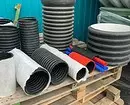
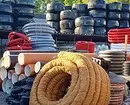
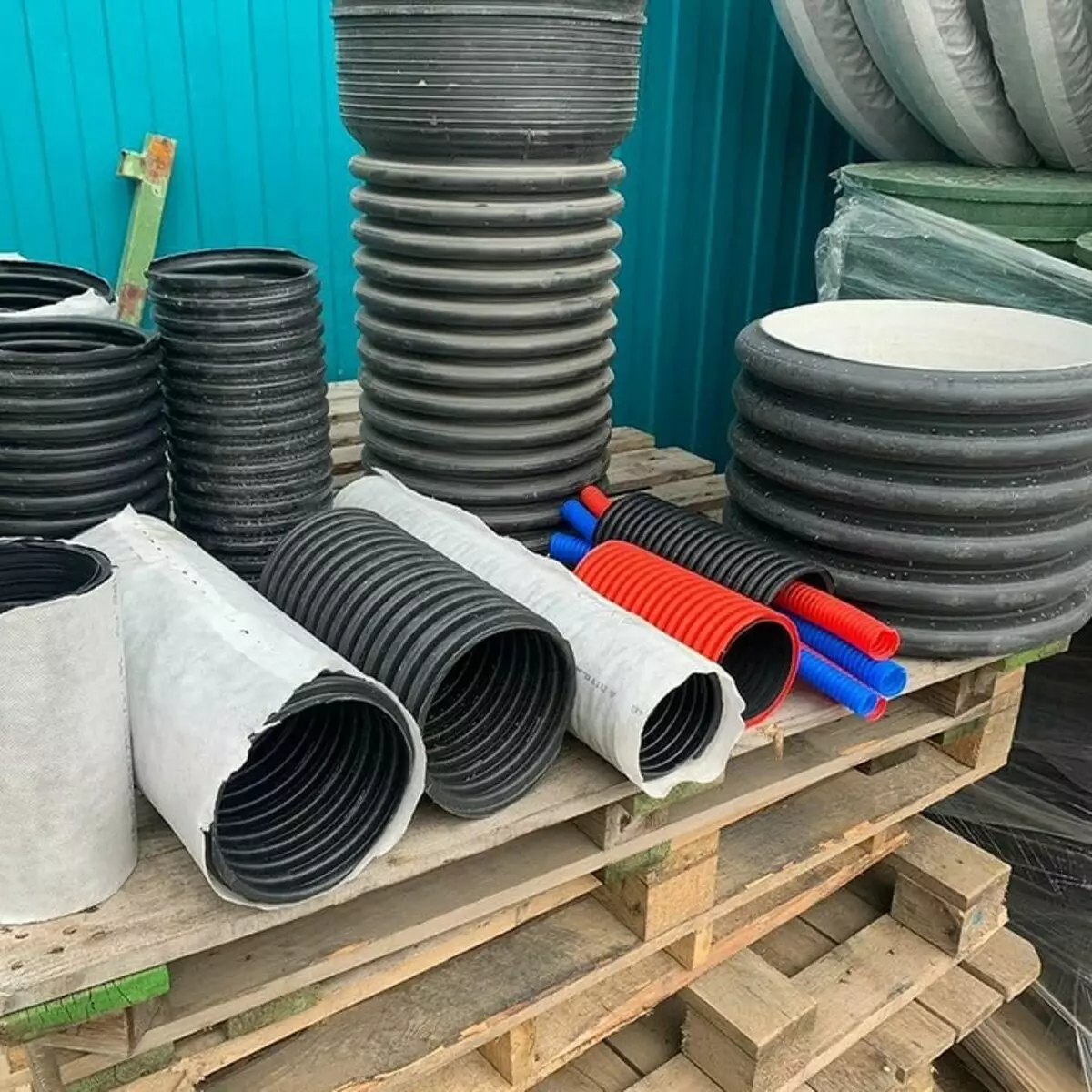
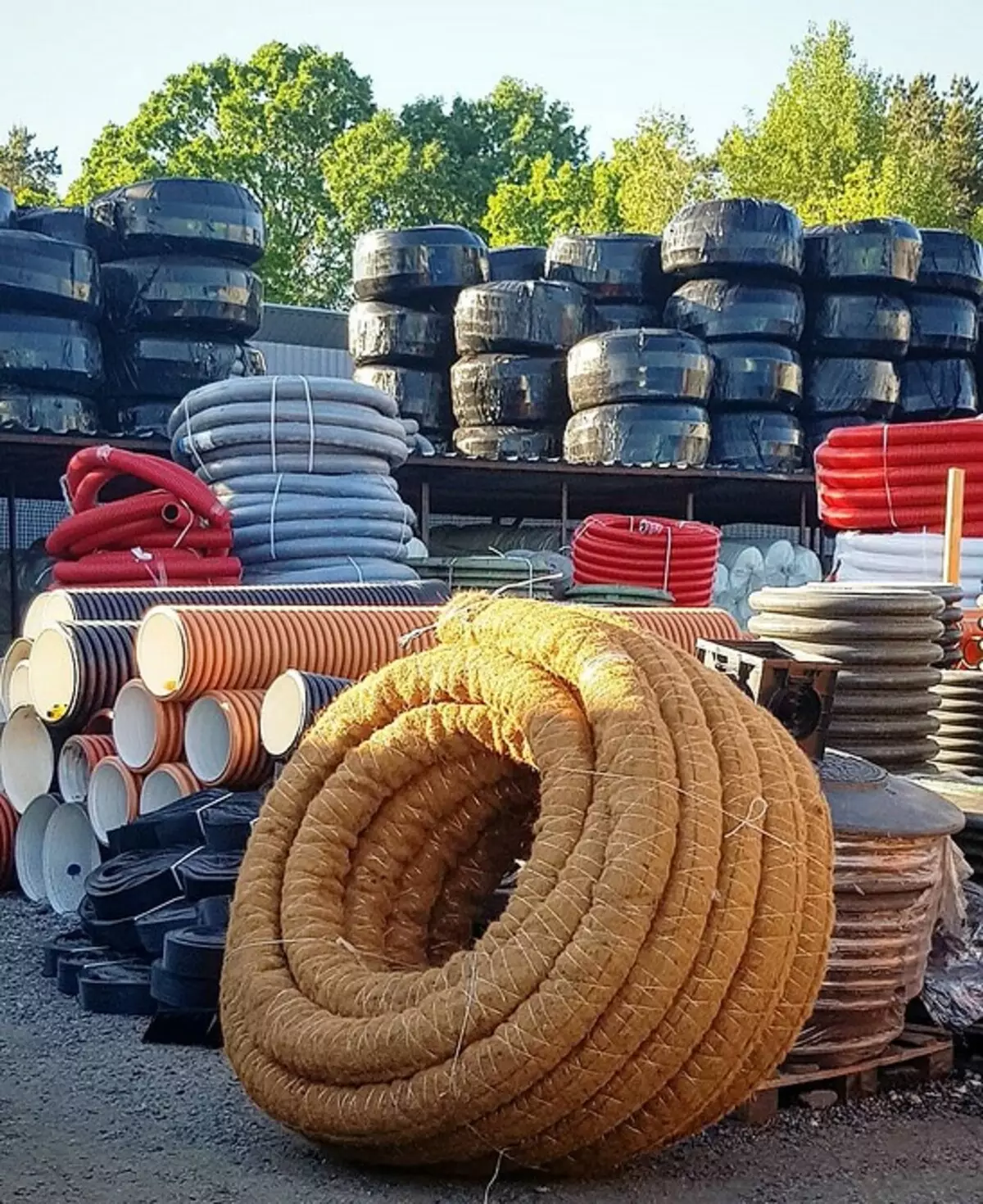
The overall disadvantage of perforated plastic is clogging holes. Therefore, models with special protection are produced. These are pipes-drain wrapped by geotextiles or coconut fiber. The first option is good for sandy and drum soil. Geekanin reinforces the details and filters small particles that can close the holes. Coconut fiber performs the same function, but it is much more expensive. Its advantage in physical origin, resistance to rotting and loads.
FEATURES OF DRAINING SYSTEM INSTALLATION
Start with drainage design. It is necessary to determine which depth the drainage tube to lay, at what angle and how to pave it. To answer these questions, calculations are carried out, which take into account several defining factors: the type of drainage, the diameter of the drain, the degree of moisturizing the soil and the geological features of the dried area. It is important to correctly find an angle of inclination. From this depends on the efficiency of the drainage.If the slope is too cool, the fluid will move over quickly. This will lead to frequent clogging of the pipeline. Slow water current, which is inevitable with an insufficient slope, is also undesirable. Stocks will begin to be stifled, thrive the drain, they will cease to function. In addition to selecting the slope, determine the depth of the bookmark. It must be below the foundation pillow by 40-50 cm.
It remains to choose the type of network. The annual system is most often used when the trenches are paved around the perimeter of the site. In this case, it is assumed that pipe-drain is removed from the wall or foundation at least 3 m. The building of the building should not already be 1 m. Choose the top point of the circuit. This is usually angle of construction. From it it is planned to lay the drain pipes to the lower point, which put a storage well.
The height difference must be such that the drains walked sick. If it is insufficient, a special pump is put, which will pump fluid from the system. Designing the scheme requires accurate calculations, so it is best to seek help from specialists. But the subsequent installation can be performed independently. We give the overall sequence of drainage styling.
Drainage layout plan
- The site places the location of the drainage pipes.
- On the markup there are trenches. Their size is determined by the previously compiled project.
- The bottom of the digs of the RVs is compacted.
- A pillow of rubble and sand is stacked on the sealing bottom. The layer of each material is 15-20 cm. If the drain is assumed without a filter, it is additionally placed geeking to prevent drainage elements.
- Pipes are cut into fragments of the desired length. They fit into the prepared trenches are connected by fittings. Installing auditing hatches, through which you can view and clean the system.
- The drain falls asleep with a layer of rubble, then the layer of sand. The thickness of each - 15-20 mm.
- Trenches are completely filled with soil.
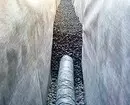
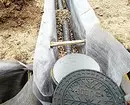
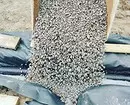
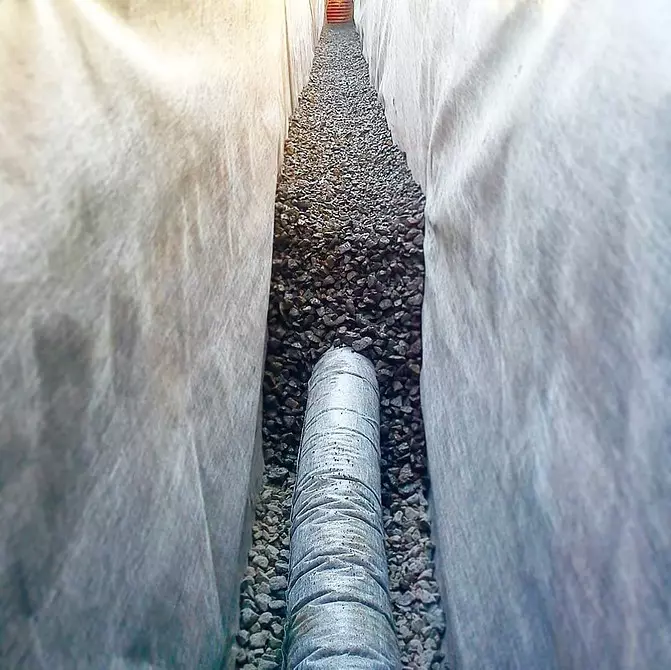
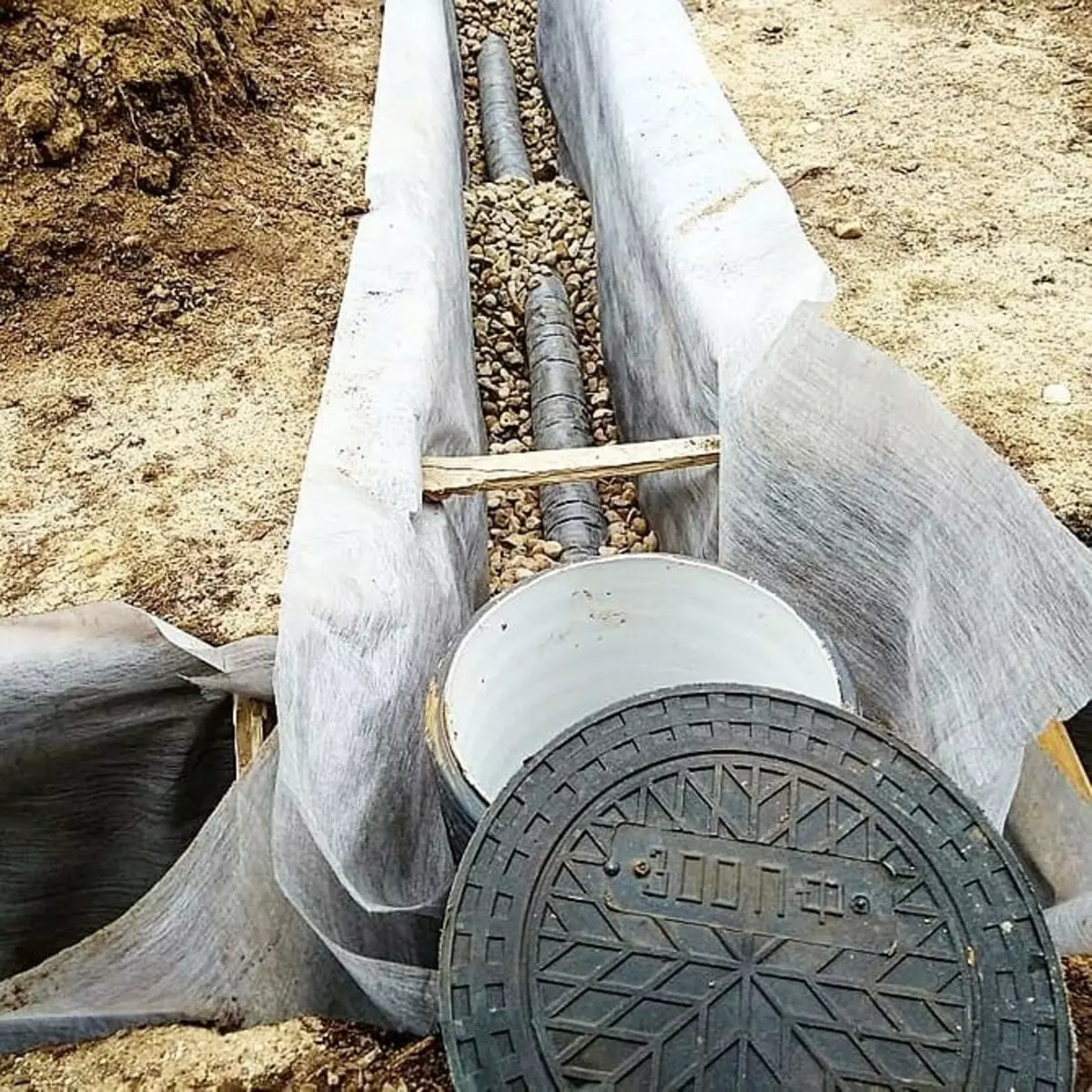
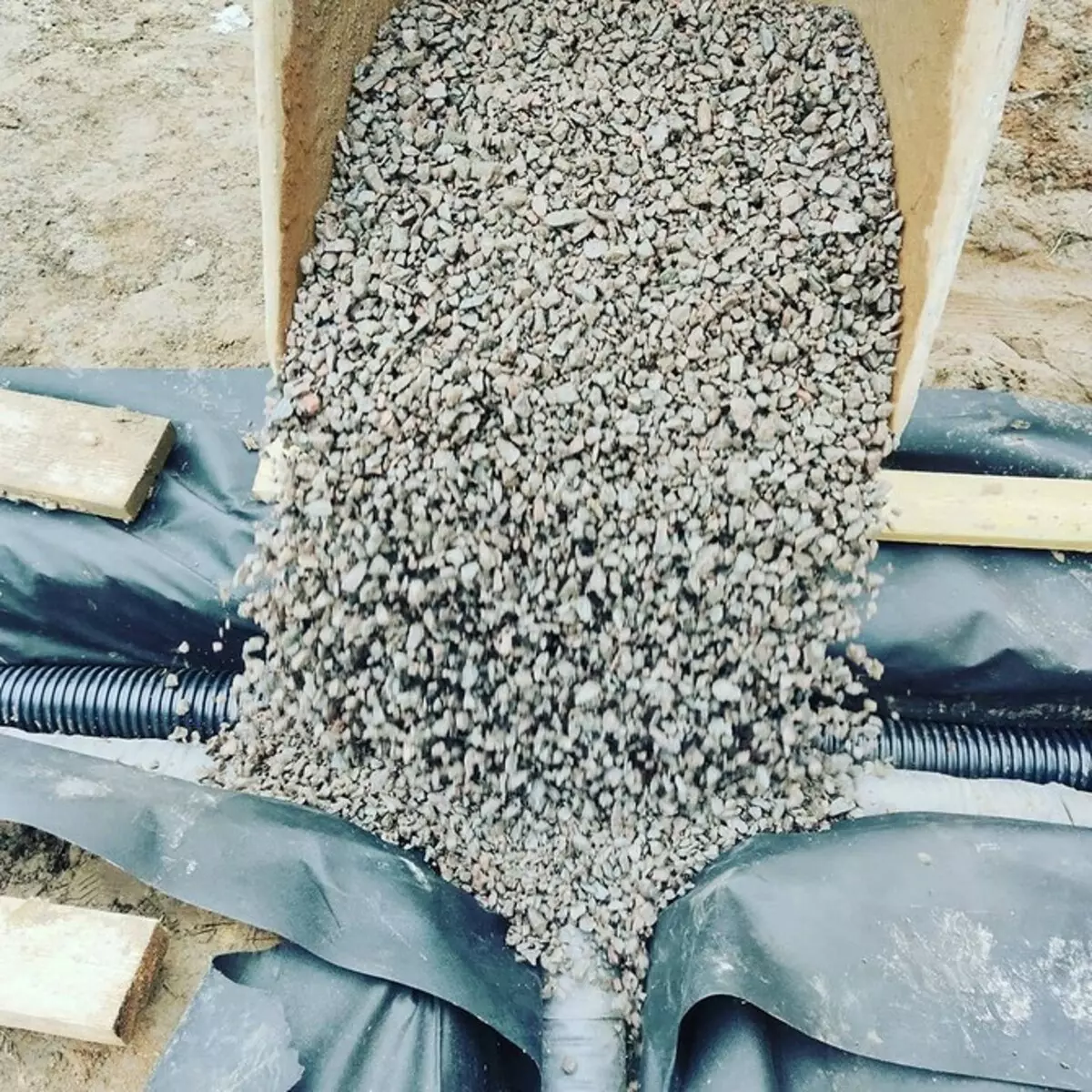
A competently designed and correctly assembled drainage system will assign raindling and groundwater from the site and buildings. It will protect the construction of destruction, and plants from wring. Mount the drainage is more correct at the construction and arrangement of the local area.




